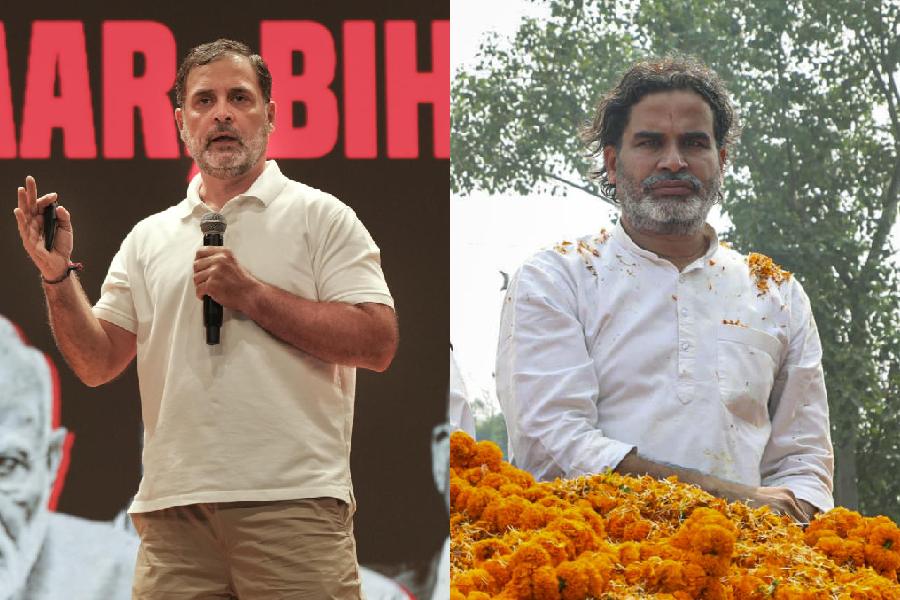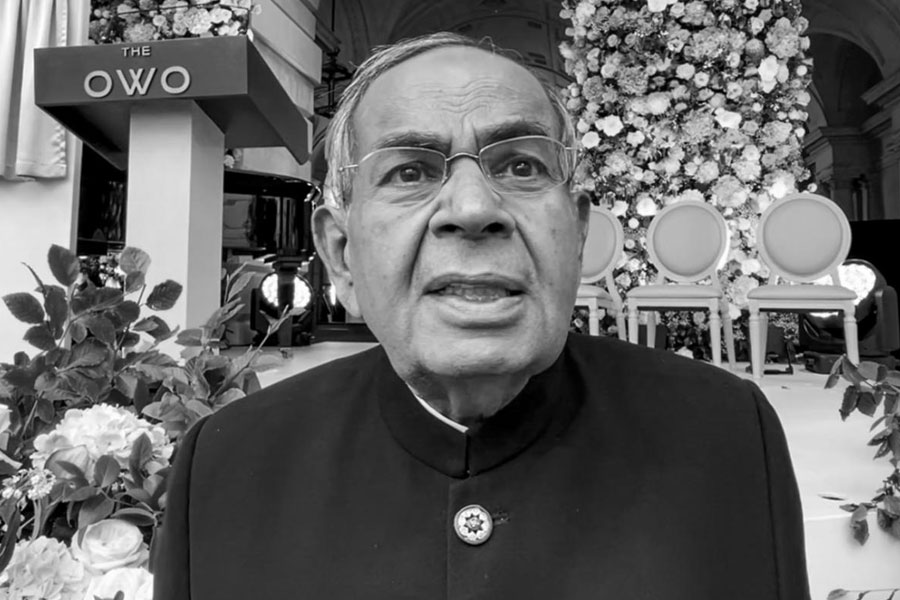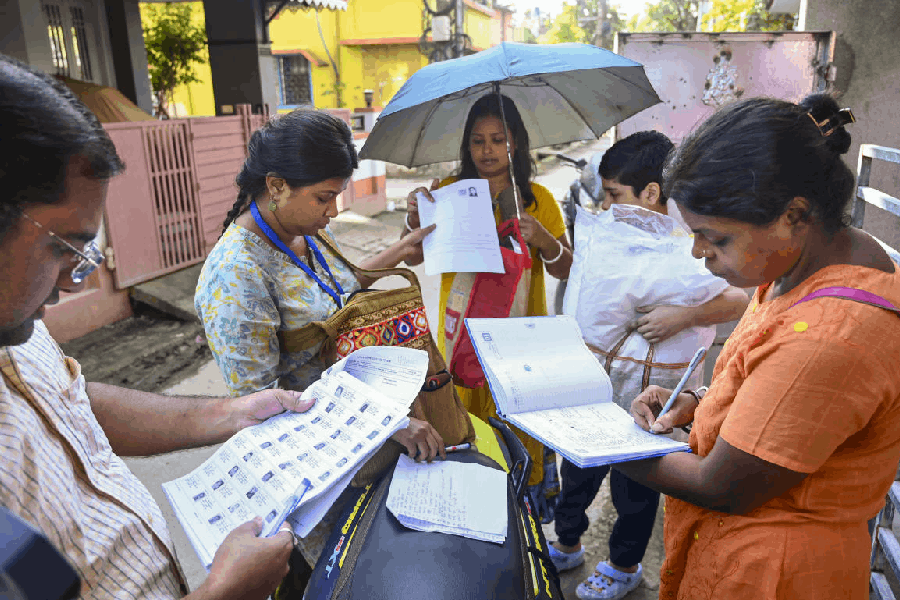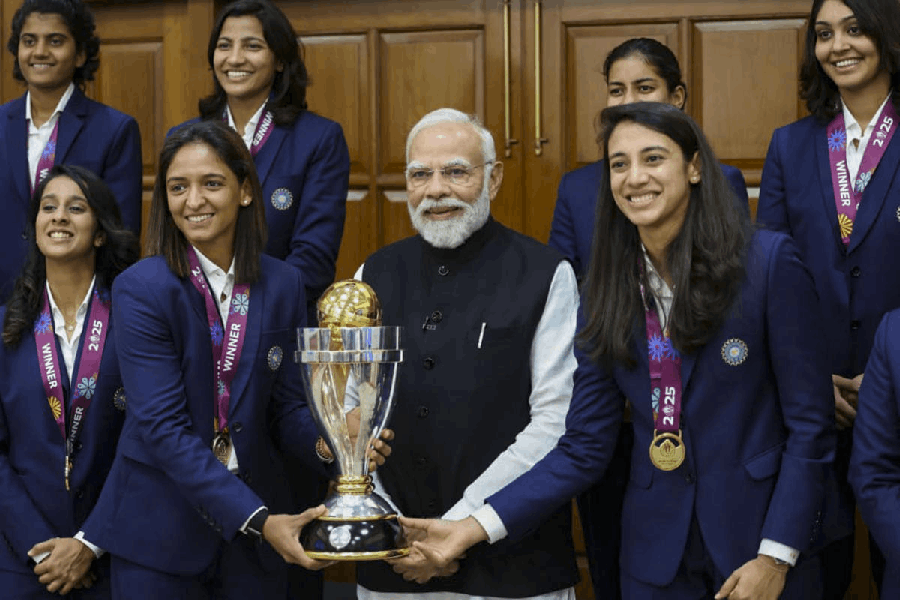 |
 |
 |
 |
 |
 |
| From top: Krug and Dom Pérignon rule the roost for premium champagnes; Brut is the mainstay of the champagne business — try Canard-Duchêne for taste; and if you want to go all out for luxury try another top league bubbly — the Louis Roederer |
Should you be reaching for a Moët & Chandon Brut over the New Year or uncorking a bottle of Veuve Clicquot to celebrate that new contract that will bring in millions? And if you’re determined to splurge shamelessly, how about a Louis Roederer Cristal — if your eyes are wandering to the bottom line, remember the bill’s nothing less than an eye-popping Rs 25,000.
Champagne used to be saved for once-in-a-lifetime celebrations — if it was ever drunk at all by Indians. Today that’s changing. Champagne’s still the bubbly effervescent liquid for special toasts and celebrations and it hasn’t lost its extra-special flavour. Nevertheless, it’s not utterly out of reach as it once might have been.
“Indians are growing accustomed to drinking champagne not only as a celebratory drink, but as something that completes a dinner experience,” says Ashwin Deo, who was till recently managing director, Moët Hennessy India. Moët Hennessy is part of the giant LVMH conglomerate and its champagne portfolio includes top league names like Dom Pérignon, Moët & Chandon and the incomparable Krug.
That’s why you might find champagne increasingly on the menu at five star hotels around the country. At Delhi’s Shangri-La Hotel, for instance, you can sit at the bar and buy champagne by the glass — and the price isn’t too mind-boggling.
And that’s not all. Champagne has become the beverage of choice at Sunday brunches in five star hotels. At both Delhi’s The Claridges Hotel and the ITC Maurya’s Westview Grill restaurant, guests can toss back unlimited quantities of champagne at the Sunday brunch package which comes to Rs 2,500 plus taxes. Luckily, the prices in Calcutta are slightly cheaper: a champagne brunch at ITC Sonar, Kolkata’s Pan Asian or Eden Pavilion is yours for Rs 1,500 plus taxes.
If you’re in Delhi, the Sunday brunch at the Taj Palace’s Café Fontana with unlimited champagne is slightly easier on the pocket— Rs 2,250 plus taxes.
“Champagne in India evokes the same passion like it does anywhere else in the world. It symbolises entertainment, romance and the good life,” says Rajiv Singhal, the India director of the official champagne trade body, the Comité Interprofessionnel Du Vin de Champagne.
The fact is that champagne consumption in India is still tiny by international standards but it’s growing in great gulps. That’s why the official champagne trade body has identified India as a key market for the future. Singhal reckons about 25,000 cases of champagne were sold in India in 2007 and that’s rising dramatically.
Perhaps it was inevitable that Indians would start reaching for champagne. Wine drinking has boomed in India during the last three years and it’s hardly a surprise that champagne is following it. “Champagne consumption in India isn’t exceptionally high by international standards, but as Indians are getting wealthier, more champagne shall flow in hotels and restaurants,” says Andrea Aftab Pauro, owner of Baci, an Italian restaurant at New Delhi’s Sunder Nagar.
Basic Facts
It’s important to remember that there’s champagne and then there’s higher quality champagne which can be spectacularly expensive.
But whether you are drinking the best vintage champagne or more run-of-the-mill stuff it’s important to remember a few basic rules about the bubbly liquid.
First, here’s a fact which most people know by now — this crisp, light liquid comes only from France’s Champagne region (a province in northeast France, about 160km east of Paris).
Champagnes are always either white or rosé in colour (rosé is also known in wine circles as pink champagne and it’s an increasingly popular champagne category).
Pink champagne is made by blending red grapes — Pinot Noir or Pinot Meunier — and white grapes — Chardonnay. Champagne made from white grapes is Chardonnay while those extracted from red grapes could be Pinot Noir or Pinot Meunier. Says Singhal: “When 30 per cent of each of the three grape varieties is blended together, we get what is known as the Brut non-vintage.”
The mainstay of the champagne business is the Brut non-vintage which accounts for about 85 per cent of production from the region. “The majority of the champagne produced is non-vintage, that is, a blend of wines from different vintages (culled out of many years),” says Aman Dhall, executive director, Brindco, the country’s largest importer of fine wines.
That’s one point where champagne diverges from wine. In the wine-growing business there’s a new vintage every year. By contrast, in the champagne world, vintage varieties are not that commonplace. Says Singhal: “Typically, you would be lucky to have three vintages in a decade. For instance, 1999, 2000 and 2001 were declared as vintage years by the House of Moët et Chandon since their yield in those years gave the best quality product which was too good to be hidden in a non-vintage blend.” Vintage champagnes have a great deal of character and are produced exclusively from a single harvest.
Then, the vintage category is further broken down. In the vintage category, but further up the ladder you also have what’s known as a special cuvée which is the extra-special product from every champagne house. So, from the house of Louis Roederer, the top-notch label in the special cuvée category is Cristal. Similarly, the top-of-the-line Veuve Clicquot is La Grande Dame while Moët has its Dom Pérignon.
“It takes 15 months to age a non-vintage champagne but it takes no less than three years for a special cuvée to develop, since by law the makers are required to hold those bottles that much longer,” says Singhal. Cuvées are produced in very small quantities and with grapes picked from select vineyards.
Flavours in champagne will depend on cuvée, vintage as well as sweetness (grams of residual sugar per litre). So if it is Extra Brut, it should have 0-6gm sugar/litre and a bone dry taste. Ordinarily Brut has less than 15gm sugar/litre and has a very dry taste. Singhal notes that though Indians have a sweet palate, sweet champagnes don’t work in India.
But always remember that champagne can come only from that particular region of France. Bubbly from elsewhere is called sparkling wine. “When people want to offer you Indian champagne, you should know that it doesn’t exist. Even in France, a sparkling wine made outside the Champagne region goes by the name of ‘crémant’,” says Singhal.
Indian sparkling wines are, of course, considerably cheaper than champagne. We have brands like Marquis De Pompadour and IVY Brut (both from the same company). “These sparkling wines are cheaper in price than the original champagne (Marquis De Pompadour comes for Rs 635 plus taxes (in Delhi) per bottle while IVY Brut is priced at a modest Rs 595 plus taxes per bottle) so they fare well in the Indian market,” says Amit Mehta, bartender at the Claridges’ Aura - The Vodka Bar where on an average one in 20 guests order champagne on their night out.
Check this Out
Ivy league champagnes don’t come cheap, and you need to part with a cool Rs 25,000 (per bottle, inclusive of taxes) for Louis Roederer Cristal and Rs 6,000 (per bottle inclusive of taxes) for Louis Roederer’s Brut Premier.
Pommery’s Brut Royal can cost Rs 5,000 (per bottle, taxes included) and its Cuvée Louis, Rs 15,000 (per bottle, taxes inclusive); Bollinger’s non-vintage Brut comes for nothing less than Rs 6,500 while its Grande Année, which is a special cuvee, costs as much as Rs 14,000 (both are in terms of price per bottle and inclusive of taxes).
Alternatively, Moët & Chandon’s Brut costs around Rs 4,500 per bottle plus taxes while a Dom Pérignon can set you back by Rs 20,000 per bottle plus taxes. Krug will lighten your wallet by Rs 9,500 per bottle plus taxes and Veuve Clicquot should come for Rs 3,500 per bottle plus taxes.
Cool Cocktails
 |
If you would like to get adventurous with champagne, why not try a few of the lip-smacking cocktails that use the bubbly liquid as a key ingredient? You could try Sparkling Blue (where champagne is paired with blue Curaçao) or Bellini (in which champagne has peach schnapps, peach pulp and fruits for company).
Ask for Mimosa and the bartender will mix chilled champagne with orange juice, while a Kir Royal involves mixing champagne with Crème de cassis liqueur.
Care to sip an exotic drink? There is Tropical Hibiscus in which champagne and cranberry juice are the key ingredients. For a mint-flavoured drink, there is always Champagne Julep where fresh mint, bitters, sugar syrup is topped with champagne while Black Velvet combines Champagne and Guinness Stout beer to give it a robust edge.
Two to Tango
 |
Champagne’s effervescent spirit can add sparkle to the dullest meals. When it has body (intense with woody, spicy and red fruit overtones), it is an excellent match for stews and poultry. Champagnes with light, delicate and citrussy aromas are perfect aperitifs and go well with shellfish, sorbets and frozen desserts.
If you have settled for a classic Brut, remember that it’s probably ideal with seafood specially caviar, oysters, lobster, salad, white meat and sushi. Brut’s acidity and freshness lends itself well to salmon. And for those who’d rather try pink or demi-sec champagne (these have cinnamon and honey aromas), then you could perhaps order lamb or an au gratin dish. But when the champagne is a cherished vintage brand or a special cuvée (mature, complex, and rich with hints of subtle spices), it deserves to be savoured by itself.
Perfect Setting
Every wine drinker knows that champagne should be served in long-stemmed flutes or tulip shaped glasses. Dharti Desai, CEO and founder of Finewinesnmore, who absolutely loves the art and the drama of serving champagne says: “Serving champagne with style — removing the cork quietly, cooling the wine to the right temperature, all of this needs a lot of patience and good initial practice — it is definitely not a natural gift.”
Desai adds that a hot new trend in France is called ‘La Piscine’ and it involves serving champagne in a large goblet topped with crushed ice.”
So now that you are armed with a slew of details, go ahead and uncork that bubbly. You’re bound to feel like royalty.











